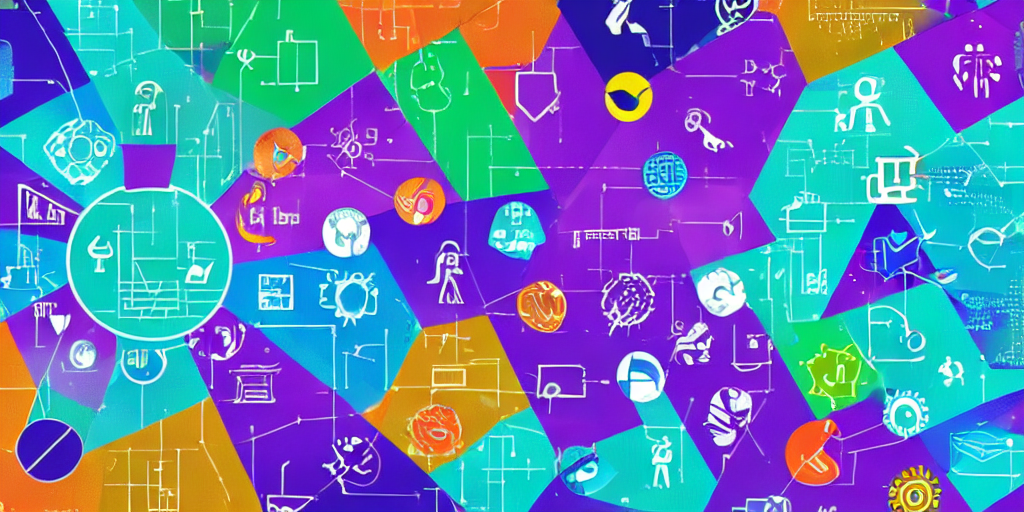Lyhyesti suomeksi: Monet organisaatiot ovat luoneet ja julkaisseet omia tekoälyn eettisiä ohjeistuksia edistääkseen tekoälyn vastuullista ja eettistä kehittämistä ja käyttöä. Tämä blogikirjoitus kertoo, miksi periaatteelliset tekoälyn eettiset ohjeet eivät yksin riitä takaamaan eettisyyttä.
The ethics of artificial intelligence (AI) is a broad research area that exists between philosophy and computer science. It encompasses everything from AI accountability (questions such as "who is responsible when an AI system makes an error") to fairness and transparency. Many companies, organizations, governments, and institutions have created and published their own AI ethics principles and guidelines to promote responsible and ethical development and use of AI.
This blog will discuss what these principles and guidelines look like and whether self-created guidelines are actually useful when it comes to doing business ethically. This discussion will mostly be based on Brent Mittelstadt’s paper Principles alone cannot guarantee ethical AI of which there will be a short summary, and other sources and references are linked to in the text. Finally, there is a brief section describing ways we can improve or supplement AI ethics guidelines.
AI ethics statements
Discussing the ethics of AI technology initially was the domain of academics. Early philosophical discussions on artificial general intelligence and machine consciousness made way for discussions about how we can ensure the ethical use of AI systems as AI technology advanced. Most of the current output from research, private, and political organizations are in the form of ethics guidelines such as the EU’s high-level expert group on AI’s guidelines. These guidelines are designed to be used as a framework to give guidance on how to deal with ethical issues and inform policy decisions but are not legally binding in and of themselves.
The German organization AlgorithmWatch started collecting and labeling these AI ethics guidelines in 2019. Currently, their inventory holds 167 guidelines from various companies, organizations, and governments (this does not include legislation). These guidelines are mostly focused on systems for automated decision-making. Of these guidelines, only 8 have a binding agreement describing an enforcement mechanism. All others only contain either voluntary commitments or simple recommendations and principles. Furthermore, the guidelines come majorly from Europe and the US. This shows a heavy influence of western values on publicly available guidelines with almost no representation of African, South and Central American, and Central Asian countries (excluding India).
Current ethics initiatives started by the industry can be seen as virtue-signaling according to critics ² ³ ⁴ ⁵. AI development companies have a vested interest to appear to be self-regulating in order to delay any legislation that would make their work more difficult to do or that would cut into their profits. So by publishing their own guidelines, they can present themselves as responsible actors in AI development. Whether this is the intent of the companies or not is up for debate, but by publishing guidelines companies can point towards it and claim to conduct business ethically even when the guidelines are limited in scope. The main limitation is often that the guidelines stick with high-level principles. For example, Google’s recommended practices for AI (one of the shortest in the industry) contains: “Use a human-centered design approach”. This is expanded by some advice on what a human-centered design approach such as “Design features with appropriate disclosures built-in” without mentioning what appropriate disclosures are. Another noteworthy limitation is that only a few guidelines explicitly address topics like the possible effects of AI systems on democratic control, political abuse of AI systems, or the ability of AI systems to reduce social cohesion by creating echo chambers. The only ones that do are created by research institutes, the Montréal Declaration for Responsible Development of Artificial Intelligence, and the AI Now 2019 Report. The latter report is also the only one discussing “hidden” social and ecological costs such as AI technologies creating consumer practices that contradict sustainability goals. To meet sustainability goals, care should be taken to reflect on the need to mine one-way-use materials, the energy consumption of running AI services, or how electronic waste should be handled.
Critics say that most corporate AI ethics discussions should be described as ethics-washing. Ethics-washing can refer to cases where there is no real mechanism to implement these guidelines or to assess that development is more ethically aware. On the other hand, reducing ethical questions to solvable technological problems will also result in ethics-washing. While creating technical solutions to identify and mitigate ethical problems can be necessary to turn a high-level principle into practice, seeing most ethical problems as solvable using technology overlooks the broader social problems and reduces continuous discussion. Later in this post, there will be more discussion on how to make sure AI ethics is not simply “technological solutionism”.
While principles give broad gestures where it is easy to find consensus among large and diverse groups of people, they do not give any moralistic judgment. For example, the principle of “AI should be fair” is widely accepted but does not indicate what is considered fair. In some situations, equality, where everyone is treated the exact same, is preferred. In other, you might want to give some preferential treatment to compensate for a group that has historically been disadvantaged. It is up to the individuals who are implementing some AI system to make a decision about what fairness means in this case. The ethics principles only dictate that it should be fair, but the interpretation of how it should be operationalized is up to individuals. This shows that ethical principles can help in guiding ethical AI development but cannot guarantee the final outcomes of an AI system developed with these principles provides an ethical outcome. Most AI ethics researchers seek to complement or change the principled approach to dealing with AI ethics. There are some, however, that claim that if the principles are comprehensive enough, the guidelines will not oversimplify the ethical debate.

Principles cannot guarantee ethical AI
In the paper Principles alone cannot guarantee ethical AI, Brent Mittelstadt takes the position that guidelines with principles are not enough to ensure AI organizations will behave ethically. The stance is reinforced by empirical experiments showing that reading ethics guidelines have no significant influence on the ethical decision-making of software developers. When looking at publicly available ethics guidelines, reviews show that most center around four main principles, respect for human autonomy, prevention of harm, fairness, and explainability. These principles are similar to medical ethics which have a long history of principled ethical standards. However, Mittelstadt points out four main differences between medical ethics and AI ethics and critically examines why ethical principles are suitable for the field of medicine, but not for AI development. This section will discuss these differences and go over suggestions on how we can supplement these ethical principles.
Differences between principled medical ethics and AI ethics
1 Common aims and fiduciary duties
A medical professional has a moral duty to look after the well-being of their patient. This primary goal is absent in AI development. AI developers do not have something that could be equivalent to a “patient”. Due to the lack of a fiduciary relationship with a “patient” and common pressures to behave against the public interest, users of AI systems cannot rely on the developers to keep their best interests in mind.
2 Professional history and norms
Medical professional history is significantly longer than that of AI development going back as far as the Hippocratic oath in the western world. Throughout history, ethical guidelines have been created to serve as a basis for ‘good’ clinical decision-making. These long-standing traditions can be referenced when having to translate and contextualize a high-level ethical guideline into practice. AI development cannot reference long-standing norms. Furthermore, AI development varies wildly in approach, goals, backgrounds, histories, and moral obligations. These two things combined leaves the developers to interpret and resolve ethical dilemmas as they see fit. Without a large history and common goal to guide them.
3 Proven methods to translate principles into practice
High-level principles do not automatically translate into practice. A high-level principle has to be translated into norms and then into practical requirements. The normative decisions made while translating high-level principles must take into account the specific technology, applications, and local norms. This will lead to conflicting requirements depending on the context in which the principles were translated. Because of the need to interpret the principles depending on the context and the lack of longstanding historical norms, principles do not guarantee consistent ethical behavior. This could be alleviated by creating sector- and case-specific guidelines, technical solutions, and empirical knowledge of how AI can impact its surroundings instead of top-down general guidelines.
Compared to the field of medicine, there are also no common bodies that help determine what is ethical behavior in day-to-day practice or assessing particularly difficult cases. Bodies like these create proven methods to translate principles into practice across the industry.
4 Legal and professional accountability mechanisms
Lastly, AI developers do not have any legal and professional accountability mechanisms. A doctor who has behaved unethically can be barred from practicing medicine again because there are licensing schemes as well as ethics committees and professional medical boards. These mechanisms do not exist universally across all of AI development. Because of their absence, an AI developer cannot be sanctioned for not following ethical principles so the user cannot take it for granted that the AI developer has committed to some ethical framework. Additionally, there is no set pathway to correct wrongdoings if they occur.
As mentioned in the previous point, incorporating independent ethical auditing into AI development can keep bad actors responsible as well as assess difficult ethical cases, and set a precedent when they come up. Mittelstadt is by far not the only person to advocate for independent ethics boards. Most notably, the AI Now Report [2018, 2019] keeps repeating that the AI industry needs to have new approaches to governance in order to ensure ethical AI use. There are already initiatives for creating new governance mechanisms such as AIGA here in Finland. Moreover, with an outside organization, it would be possible to license developers who work on high-risk AI.
Conclusion
This blog showed the shortcomings of having high-level ethical principles. Many solutions to overcome these shortcomings require a shift in AI development by increasing outside oversight and legislation to ensure ethical business. While individual organizations cannot achieve this alone, they should be aware of the traps and weaknesses that high-level ethics principles bring with them. Most importantly, ethics will always be a process. We shouldn’t see ethical challenges as something that can be fixed through technical solutions and principles alone.
The constant changes in technology and applications require us to approach ethics as an ever-changing process. New ethical challenges will come up and require an open debate in order to make sure AI development reflects many viewpoints and ethical questions are not simplified to ‘solvable’ problems. A first step towards continued ethical thinking could be incorporating AI ethics checklists into AI development. These checklists can guide developers to embrace ethical thinking as long as the checklist is broad enough as well as require active participation from the participants.
Emblica and ethics
Here at Emblica, we are strengthening our ethical commitments by implementing an active ethics review into our workflow. We have been reviewing statements and guidelines from several companies and institutions to gauge what is out there and what we can learn from them. As this blog post discussed, only having a set of AI principles cannot guarantee that our processes are ethical. That is why we are taking our time to review and consider what approaches will give the best practical ethics recommendations and also avoid the trap of ethics-washing. Once we have concluded our research we will publish our approach to ensure that our AI solutions are developed ethically.
Emblica is a technology company focused on data-intensive applications and artificial intelligence. Some examples of our customers are Sanoma, Uponor, Caruna, and the Tax Administration. Emblica is 100% owned by its employees.

